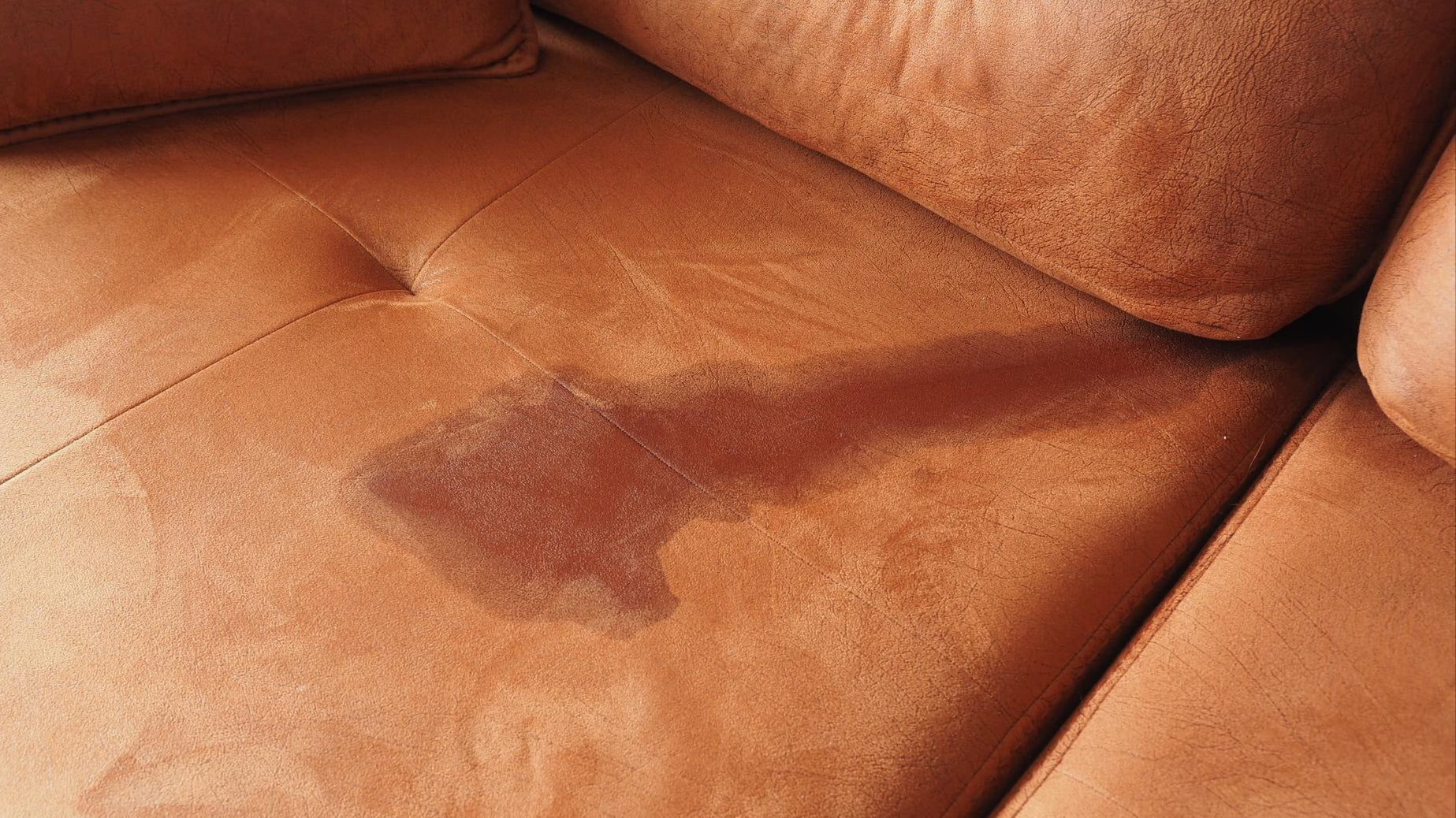Your Number 1 Guide on How to Get Urine Smell Out of Couch After It Has Dried
Dominic Carrington
Are you a dog person? Are you a cat person? Doesn’t matter, as having either pets can be tricky. Y’know how they are, especially when not potty trained. Dried urine odors on a couch can be stubborn, but they’re not permanent. If you’re facing this on your day to day basis, it would probably be a good idea to train your pet.
In the meantime, we’ll let you in on a little secret on how to get urine smell out of the couch after it has dried using effective home solutions, enzyme cleaners, and pro tips. Say goodbye to unwanted smells and hello to a fresh, clean living space.
Does your couch smell suspiciously funky—even after cleaning it once?
Urine accidents can be surprisingly sneaky. Whether it’s a pet mishap, a toddler’s nighttime surprise, or a spilled training pad, urine that has dried into your couch fabric doesn’t just go away with surface-level cleaning. Once absorbed, it sinks into the upholstery and padding, creating a lingering smell that worsens over time.
The good news? There’s a proven way to tackle even dried-in urine odors—and it doesn’t require throwing the whole couch away. Let’s break down how to get urine smell out of a couch after it has dried using home remedies, deep cleaning techniques, and a few smart tools.
How to Get Urine Smell Out of Couch After It Has Dried

1. Locate the Problem Area
Start by pinpointing exactly where the odor is coming from. Even if the urine has dried and isn’t visibly staining the surface, the smell gives it away. If you’re not sure, a UV blacklight flashlight can reveal old urine spots by causing them to glow slightly.
Dried urine is often invisible, especially on dark fabrics, but it continues to release ammonia-based gases, causing that persistent sour smell.
Pro tip: Mark each detected spot with a piece of masking tape so you don’t miss any during treatment.
2. Blot Any Residual Moisture

Urine may still be slightly damp deep in the cushions. Blotting helps remove residual moisture and prevents further spreading during cleaning.
-
Use clean, absorbent cloths or white paper towels.
-
Press firmly but gently. Do not scrub, as this can drive urine deeper or damage delicate fabrics
-
If it’s bone-dry, move to Step 3, but still blot gently after applying cleaning solution.
3. Spray a Vinegar-Water Solution

Mix one part white vinegar with one part warm water in a spray bottle. Liberally apply this solution to the affected area. It naturally neutralizes the uric acid in urine and helps kill odor-causing bacteria without damaging most fabrics.
Let the solution sit for 10–15 minutes, allowing it to penetrate the cushion and neutralize the urine particles beneath the surface.
4. Blot the Area Again
After allowing the vinegar mix to soak, blot the area thoroughly. You may need to repeat this process a second time for strong odors or larger stains.
Tips:
-
Use a fresh cloth or absorbent towel.
-
Press down repeatedly until the area feels just slightly damp to the touch.
-
If you notice a strong urine smell even after blotting, repeat Step 3 before moving on.
5. Sprinkle Baking Soda Generously

Once the spot is only lightly damp, cover it completely with baking soda. This natural deodorizer works by absorbing both moisture and lingering odors.
Let it sit for at least 8–12 hours, or overnight if possible.
6. Vacuum the Baking Soda

Once the baking soda is completely dry, vacuum it using a brush attachment to lift any residue from the fabric. This should also lift out the odor along with it.
7. Still Smells? Use an Enzymatic Cleaner

If you’ve followed all the steps above and the smell still lingers, it’s time to bring in a bio-enzymatic cleaner. These products, like Nature’s Miracle or Rocco & Roxie, contain live enzymes that break down the urine proteins—not just mask the smell.
Apply generously per the product instructions and let air-dry completely. Avoid using other cleaners before this, as they can deactivate the enzymes.
Alternative Cleaning Methods (When the Basics Aren’t Enough)
Sometimes, home remedies need backup. Here are a few stronger options if vinegar and baking soda aren’t cutting it:
-
Hydrogen Peroxide Mix: Combine 1 cup hydrogen peroxide, 1 tbsp dish soap, and 1 tbsp baking soda. Test on fabric first. This is great for light fabrics but may bleach darker materials.

-
Steam Cleaning: If the urine soaked into deep cushions, renting or using a handheld upholstery steam cleaner can extract residual fluids and sanitize the area. Always follow up with an enzymatic cleaner.
How to Prevent Future Urine Odors
After reclaiming your couch, it’s smart to take a few preventive steps to avoid going through this again:
Use Washable Couch Covers
Invest in waterproof or machine-washable slipcovers for easy cleaning and stain protection.
Apply a Fabric Guard Spray
Products like Scotchgard can help repel liquids and slow down absorption, giving you more time to act.
Pet Training Reinforcement
If your furry friend is the culprit, consider retraining techniques or using deterrent sprays in problem areas.
Act Immediately Next Time
The faster you respond to a urine accident, the easier it is to clean. Keep a cleaning kit ready so you’re not scrambling.
Final Thoughts
Urine stains and odors don’t have to mean disaster for your favorite sofa. With the right combination of household products, enzyme cleaners, and a little patience, you can restore your couch to its former fresh-smelling glory. This guide on how to get urine smell out of couch after it has dried offers multiple ways to reclaim comfort and cleanliness without replacing your furniture. But, if you are looking to replace your furniture, it’s probably not a bad idea to get ones with washable and removable covers.



